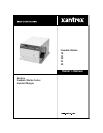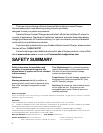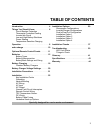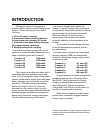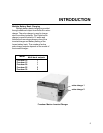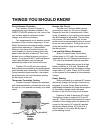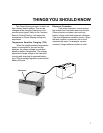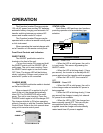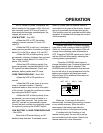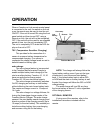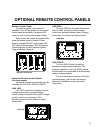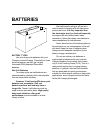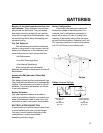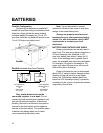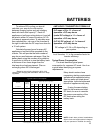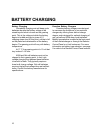
4
This owner’s manual describes the
Freedom Marine Series Inverter/Chargers from
Xantrex. These units perform four distinct
functions:
1. DC to AC power inverting.
2. Automatic transfer switching between
inverter power and incoming AC power.
3. Automatic three-stage battery charging
plus manual battery equalizing.
4. Multiple battery bank charging.
• The inverter provides regulated 120 volt AC
power at a crystal controlled frequency from a
deep cycle battery bank and is rated at:
Freedom 10 1000 watts
Freedom 15 1500 watts
Freedom 20 2000 watts
Freedom 25 2500 watts
Freedom 30 3000 watts
The output is a modified sine wave and is
compatible with most appliances, tools and
other 120 VAC equipment. (Note: Certain laser
printers, breadmakers, digital clocks and small
battery chargers may not operate on modfied
sine wave.) The idle mode reduces battery
power consumption when AC loads are
removed from the inverter output. High effi-
ciency ensures the longest possible battery life
between charges. All models are designed to
deliver surge current for starting loads larger
than the continuous rating of the inverter.
INTRODUCTION
• The internal transfer switch allows the
Freedom Inverter/Charger to be connected to
an external AC source and transfer the source
power through the unit directly to the loads.
When the external AC power source is
disconnected, the transfer switch allows
automatic switching of the loads back to the
inverter.
The Freedom Inverter/Charger operates
as a self-contained backup power system—
just add batteries.
• Freedom battery chargers with temperature
sensitive charging (TSC) are electronically
controlled. The primary charge output current
is rated at 12 volts:
Freedom 10 50 amps DC
Freedom 15 75 amps DC
Freedom 20 100 amps DC
Freedom 25 130 amps DC
Freedom 30 140 amps DC
They are designed to rapidly and optimally
charge wet cell, gel cell, or Absorbed Glass
Mat (AGM)** deep-cycle batteries. Battery
charging is automatically accomplished in
three stages: Bulk Charge, Acceptance
Charge and Float Charge. In most cases, no
attention or maintenance is required.
When using a Freedom or LINK remote
control panel, a manually engaged Equalize
Charge cycle is possible.
**Battery type selection is set on the front of the unit
or with an optional remote (Remote Control Panel or
Link Instrument).



